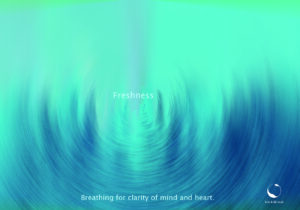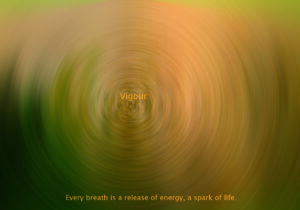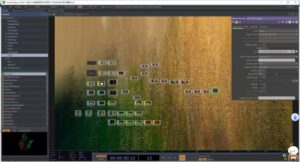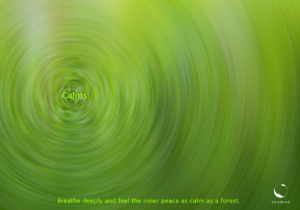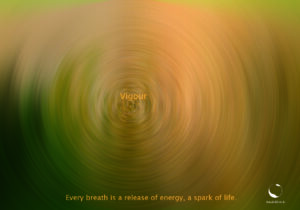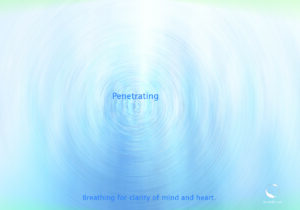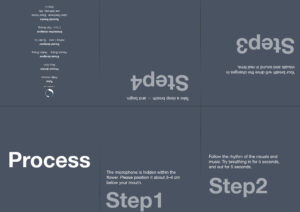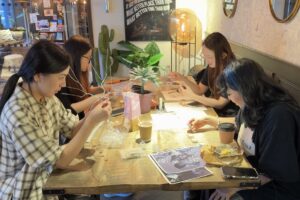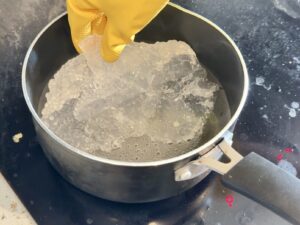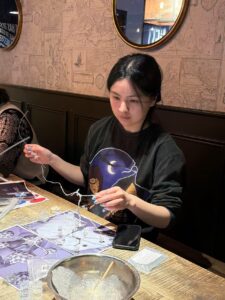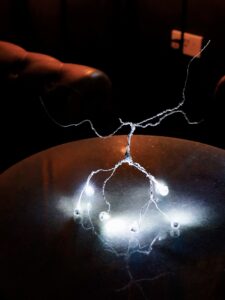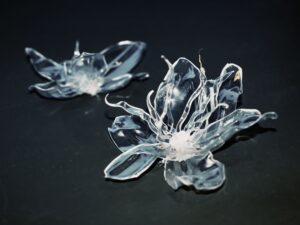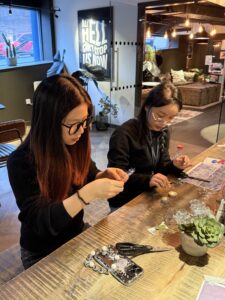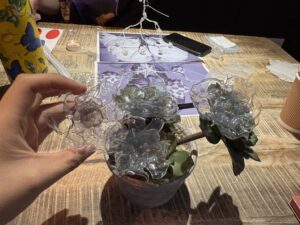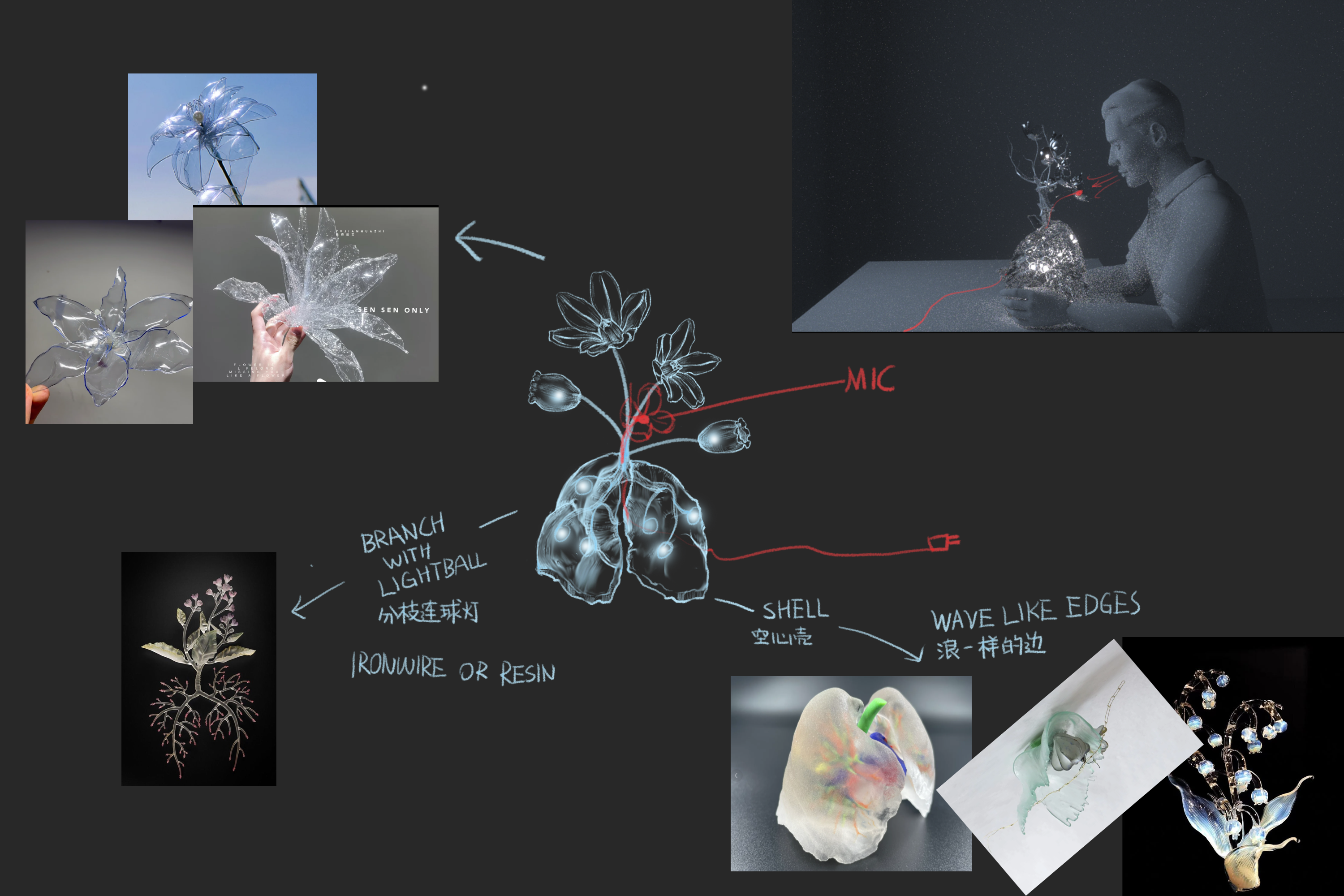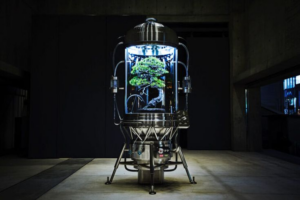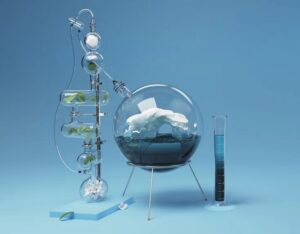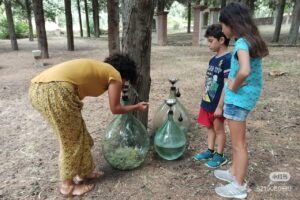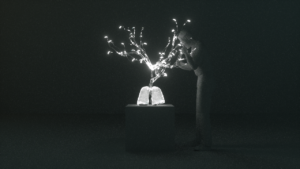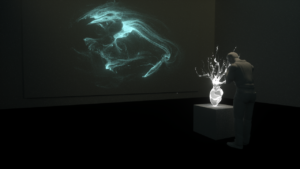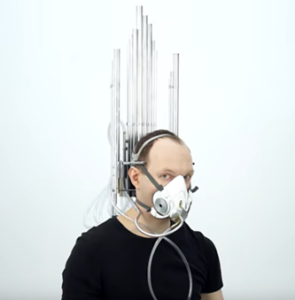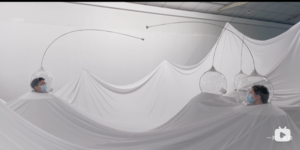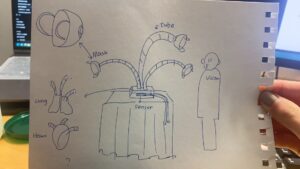Inspiration
Shape: In exploring the natural rhythms of respiration and in thinking deeply about breathing, our installation symbolizes the expansion and contraction of respiration through elements such as lungs and plants, embodying the close connection between respiration and emotion.
Meaning: We combined the physiological act of breathing with emotional expression, using lung-inspired forms to symbolize life and vitality. The lily shape represents the rhythm and continuity of breath, while also symbolizing forgiveness and release—echoing the calming effects of deep breathing.
Manufacturing Process
Flower Construction
Recycled plastic bottles were repurposed to create flower petals. The bottles were cut into thin sheets, trimmed into petal shapes, and heated using candles or a heat gun, allowing the edges to curl naturally. These sculptural petals were then attached to the branches using hot melt glue. A short stop-motion animation documented the process.
Lung Structure Shaping
A malleable resin material was used to form lung-like shapes. After boiling the resin to soften it, the forms were shaped by hand, with surface detailing to mimic the texture of human lung lobes. Four translucent lung structures were completed in this way.
Branch Construction
Multiple pieces of wire were twisted together to form organic, twig-like branches. These were shaped to resemble elements of the respiratory system. A thin layer of resin was applied to the surface to reduce the metallic look and better integrate with the rest of the installation. Small lights were placed at the base to represent flowing life energy.
Final Assembly
The resin lungs and plastic petals were gradually assembled onto the wire branches using hot melt glue. Together, the intertwined elements—lungs, flowers, and branches—create a cohesive installation that symbolically explores the rhythm of breath and the continuity of life.
Outcome
The installation gives a sense of stillness and relaxation, echoing the connection between the emotions and the body. In this way, the installation is not only a work of art, but also becomes a medium for meditation and relaxation.
Reflection
The main challenge was integrating lung structures with botanical elements. Wire branches required precise crafting for both stability and aesthetics. Petals made from melted plastic bottles were easier to shape, but the detailing could be improved. Overall, the result matched the original concept of expressing breath and life. Future iterations will explore more diverse materials for finer effects and greater interactivity.
Visual consistency: A key issue was the visual disconnect between the physical installation and the digital elements. Jules suggested importing photos of the sculpture into TouchDesigner and turning them into abstract visuals. This could unify the physical and digital, similar to the approach used in 77 Million Paintings.




